Anglers Booking Team
The expert copywriters at Anglers Booking have meticulously crafted this article. Our dedicated team of writers provides valuable insights and information to enhance your angling experience.
 12 minutes read
12 minutes readThere is something so primal yet deeply appealing about the bow and arrow, particularly when combined with fishing. It evokes echoes of the ancestors, stirring dormant animal genes and the primal drive for survival, and as such, it is aligned with fishing and its ancient beginnings when it was done solely for food.

However, in the modern era, bowfishing is not just a traditional method but an exhilarating activity revived in recent years. It combines the thrill of archery with the excitement of fishing, making it an ideal introduction to the world of fishing, even for those without fishing experience. The sheer thrill of aiming and shooting at fish in their natural habitat is an experience like no other, sure to get your heart racing and your adrenaline pumping.
If you're ready to embark on your first bowfishing adventure, then you guessed it, to get started, keep reading this comprehensive guide that will provide you with everything you need to know to get about bowfishing!
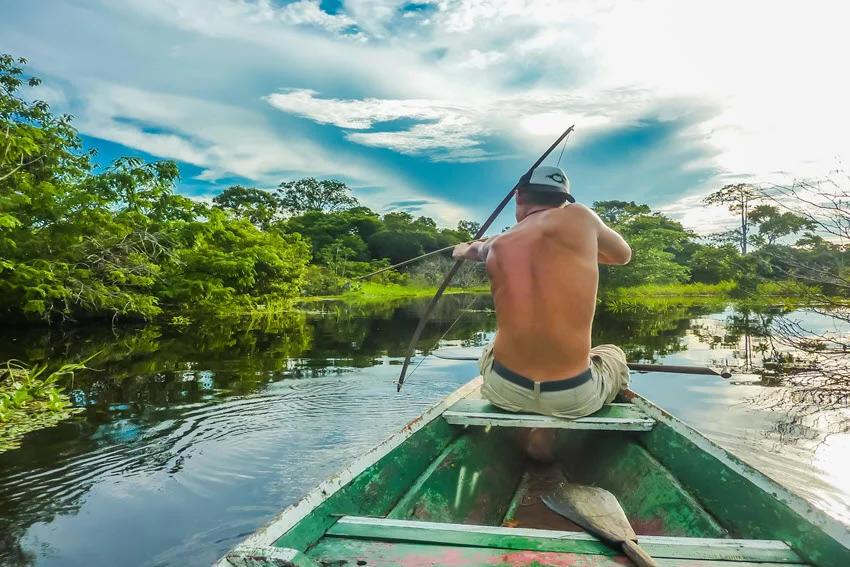
At its core, bowfishing is an exciting fishing technique, skillfully synchronizing the precision of archery with the thrill of fishing. But with a twist! Traditional fishing rods and reels are not used in this technique, but specialized bows equipped with a reel and barbed arrow are specially designed for this technique, essential penetration, and fish capture.
Bowfishing allows anglers to target fish directly from the water's surface, creating room for plenty of action and a visually appealing fishing experience. Traditionally, bowfishing involved using a bow or crossbow to shoot fish through the water's surface with a barbed arrow tied to a line, then manually reeling the line and arrow back in. However, today, the reel is mainly placed on the bow.
The equipment is specially adapted to this technique, and everything is specially made. The bow is compound or recurve with an attached reel, while the arrows are heavy, with specialized tips. In addition, bow anglers often use polarized sunglasses to reduce glare and improve visibility when targeting fish below the water's surface.
Despite its specific techniques, bowfishing is not exclusive. It's accessible to all, regardless of previous fishing experience, making it perfect for beginners and experienced anglers alike. This inclusivity creates opportunities for creative adventures that are increasingly popular among fishing enthusiasts. Whether you're a seasoned angler or a complete novice, bowfishing welcomes you to its exciting world with open arms.
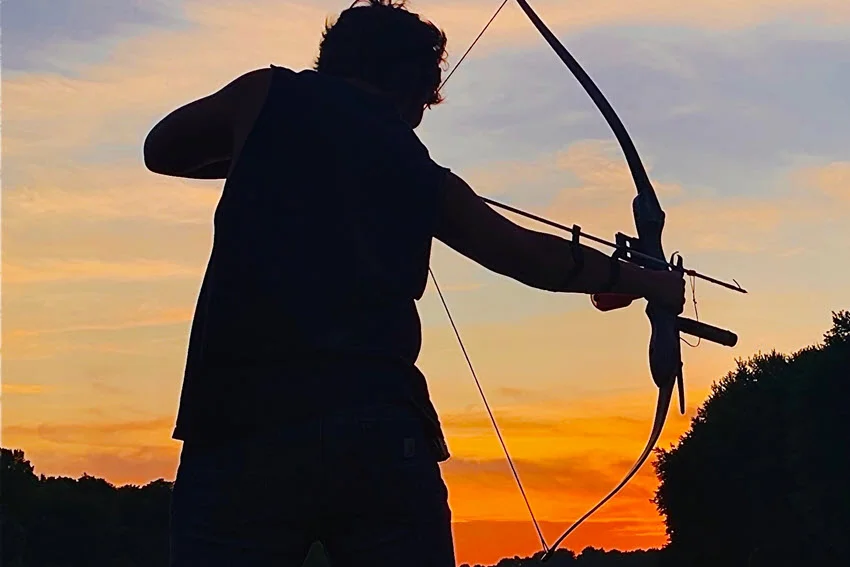
You have to admit that even if you have no experience in any angling technique, bowfishing sounds adventurous and fun as a particular type of archery. And that is undoubtedly the number one reason you should try bowfishing. It offers an exciting challenge that requires precision and quick reflexes, making it a fun sport.
Bowfishing is not just about the thrill of the sport but also about its ecological benefits. By targeting invasive species such as Carp, Gar, and Tilapia, bowfishing helps to maintain environmental balance.
It's an affordable, easy-to-learn, and nature-friendly activity that provides diverse and exciting outdoor experiences. Engaging in bowfishing is not just a sport; it's a contribution to preserving our aquatic ecosystems, and you can be proud to be a part of that.
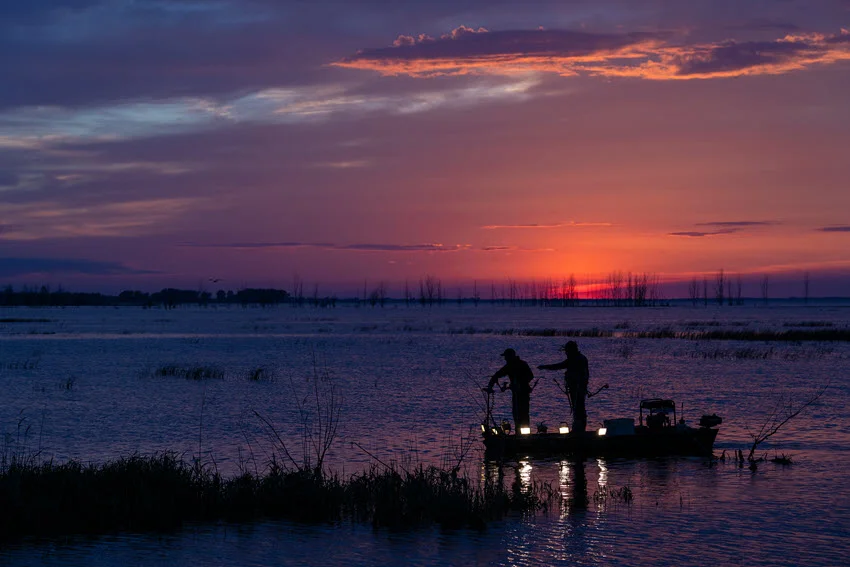
It is practiced in shallow waters, such as rivers, lakes, and coastal areas, but increasingly in marine and ocean waters. In addition to using a bow and arrow, good eyesight is also required for visual focus and clarity.
Still, because of the hype, bowfishing is best during warm seasons, especially in spring and summer, when most fish are more active in shallow waters. Also, it can be enjoyed both day and night, and night bowfishing is beautiful due to its powerful lights that attract fish.
Calm conditions with little wind are ideal for spotting and targeting fish. When targeting specific species, consider their seasons, especially during spawning periods. Understanding these optimal times improves your bowfishing experience and makes it enjoyable and environmentally beneficial.
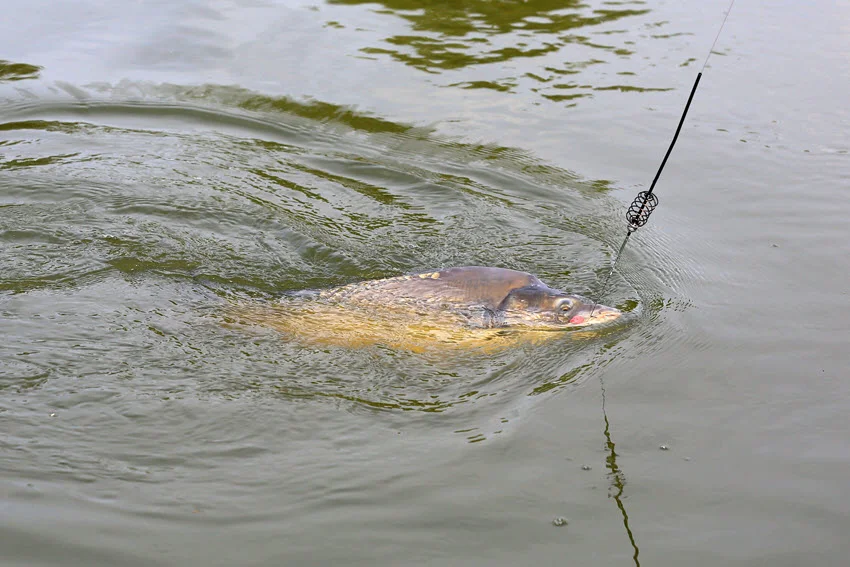
Although bowfishing is an enjoyable technique, there is a catch. You can't just grab a bow and shoot any fish in the water like in movies about primitive aquatic creatures. It is essential to remember that bowfishing is prohibited or requires a special permit in most states.
So, before you embark on the bowfishing adventure, familiarize yourself with the fishing regulations of the state where you are located. In most states, bowfishing is prohibited or requires a special permit. You must typically apply through your state's wildlife agency to obtain a license.
The process usually involves filling out an application, paying a fee, and possibly taking a bowfishing safety course. Once you have your license, you can legally enjoy the sport and contribute to managing aquatic ecosystems. These are some of the most popular species kept in freshwater and saltwater:
Carp: This species is a very invasive fish and the primary target of anglers because there are so many of them in freshwater bodies, and their numbers often negatively affect entire ecosystems.
Amur: Similar to the Carp, the Amur consumes large amounts of aquatic vegetation and can significantly threaten the balance of local ecosystems.
Buffalo Fish: Anglers often target these native fish because of their size and the challenges they present.
Gar: A well-known species that is very easy to spot, with extremely long, slender bodies and sharp teeth. It swims in slow waters and is a popular target due to its distinctive appearance and aggressive nature.
Bowfin: This species' look goes perfectly with bowfishing. It is known for its durability and prehistoric appearance and is usually targeted for bowfishing.
Catfish: Bow anglers also target some species of Catfish, primarily those prone to shallow water.
Flounder: This marine species has a distinctive flat body that can camouflage it on the ocean floor. It is often found in shallow coastal waters, hidden on a sandy or muddy bottom.
Sheepshead: A fish recognizable by its distinct black and white vertical stripes, Sheepshead can be found around various structures.
You can shoot these species with a bow and arrow; if you're lucky and skilled, you might encounter a few more.
Among everything we have mentioned so far as a unique feature of this technique, what stands out is that the equipment is relatively simple; you don't need lures, and the vividness of the bow and arrow is a unique attraction. The most essential pieces of equipment are your bow, arrows, and reel.
Let's get to know those essentials in more detail. The bow is typically a compound or recurve bow with an attached reel. The arrows are heavy and equipped with specialized tips for fish penetration. The reel is a crucial part of the setup, allowing you to reel in the fish once it's been shot.
When choosing a bow, consider factors such as draw weight, arrow speed, and the type of reel it can accommodate. For arrows, look for durability and a sharp, barbed tip. The reel should be sturdy and able to handle the weight of the fish you're targeting.
Reaching an arrow without a bow is impossible, and bows are vital to the bow-fishing angler's arsenal. There are many types of bows, each with advantages and disadvantages, and the choice ultimately comes down to personal preferences. Let's get to know them in more detail.
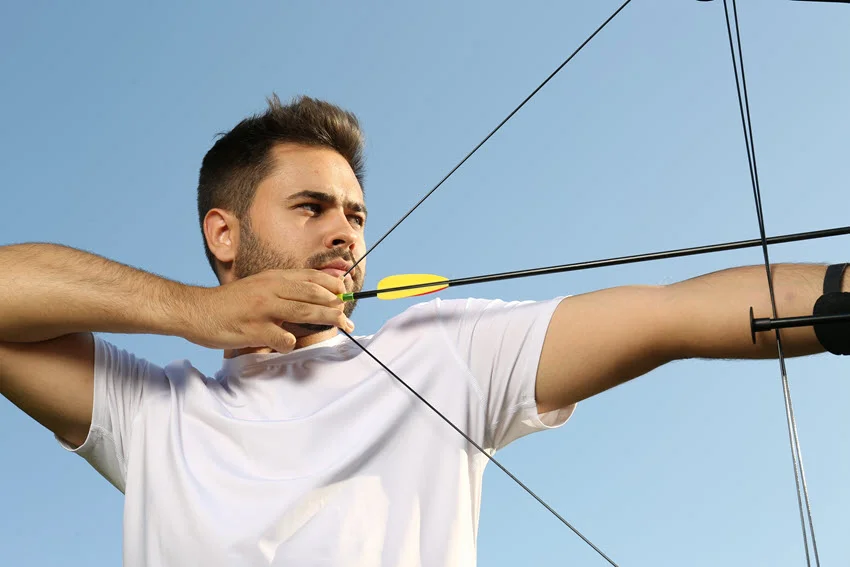
This type has an old-school charm. Its tips are curved forward, which gives it extra strength. One of the most significant advantages is its light construction, which makes it easier to carry and maneuver and is especially useful when on the water for a long time.
In addition, the design's simplicity means fewer parts can break or require maintenance. Recurve bows are generally easier to maintain than their compound counterparts.
They are more straightforward and accessible to operate and maintain but require more physical strength and are slightly less accurate than complex ones. The release provided by the nails allows archers to hold the shot longer with less effort, which is especially useful when waiting a long time for the perfect shot. A light draw cycle and reduced hand shock help shooters make accurate shots, essential for hitting moving targets.
There are no complicated pulley and cable systems, and less can go wrong, making them more reliable in rugged terrain. Although recurve bows require more physical strength to draw and hold, they lack the mechanical assistance of compound bows, meaning that developing good form and technique is crucial. For bowfishing, where shots are often taken at close range, a recurve bow's raw power and directness are more than sufficient.
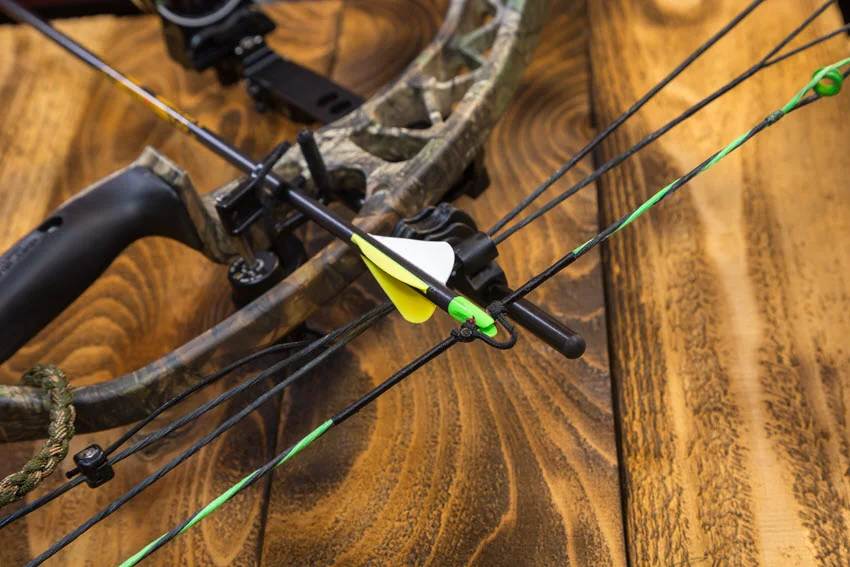
Compound bows have a slightly more advanced design and several mechanical advantages. Using a pulley and cable system, these bows reduce the force required to hold the string at full tension, allowing for better control and stability.
The mechanical design improves accuracy, providing smoother, more consistent strikes that are ideal for the fast and accurate targeting required in bowfishing. Despite their power and speed, compound bows can work effectively with smaller draw weights, usually around 30-40 pounds, enough to penetrate the water and catch fish.
Compound bows are Made from aluminum and carbon fiber and are built to last in harsh environments. Their key features include compatibility with bowfishing reels, and specialized arrow rests, ensuring a smooth transition to bowfishing.
Popular models such as the AMS Bowfishing Hooligan, PSE Archery Discovery, and Muzzy Vice offer reliable performance and provide an efficient, powerful, and accurate option for bow anglers, making them suitable for both beginners and experienced archers.
Arrows are a critical component of bowfishing equipment designed to handle the unique challenges of spearfishing. They are made to withstand all the challenges of the technique and are usually made of robust materials such as fiberglass, carbon, or a combination of both. These materials provide the strength to withstand water, rocks, and fish impacts.
Of course, they differ from traditional arrows, mainly in weight, to ensure they penetrate the water effectively and hit the target with sufficient force. Bowfishing arrows are equipped with barbed tips to secure the fish when struck. Read below for more details on the different types of arrows.
Made from robust and resilient fiberglass, these arrows can last and are designed for areas you know have sharp rocks, debris, or tough fish scales. They are heavier than carbon arrows, which helps with penetration and accuracy underwater, ensuring a successful shot. Long fiberglass arrows are equipped with barbed tips to secure the fish from impact, and they often have safety slides to prevent line entanglement and increase safety.
They are an excellent choice for beginners and experienced bow anglers alike, offering an economical option that doesn't compromise performance.
Carbon arrows are a top-notch choice for bowfishing due to their exceptional accuracy, lightweight construction, and durability. Made of carbon fiber, they provide superior performance with better stiffness and accuracy than fiberglass arrows, thus improving the ability to hit targets quickly and accurately.
Their lightweight design reduces fatigue during long fishing sessions and provides deeper penetration, which is crucial if you target larger fish. Equipped with barbed, frequently replaceable tips, solid tips, and safety slides, carbon arrows ensure a secure grip and prevent line tangling. Both beginners and more experienced people can use them as they quickly adapt to personal experience.
Hybrid arrows successfully combine the strength of both fiberglass and carbon arrows to provide a versatile and balanced option for bow anglers. This type has a fiberglass shaft wrapped in a layer of carbon fiber, resulting in a strong and flexible product. This combination of materials allows the hybrid arrows to maintain their integrity in harsh conditions and deliver accurate shots.
Hybrid arrows are mainly used in areas of clear water and debris. They are often equipped with barbed tips for a secure grip, replaceable tips for easy maintenance, and safety slides to prevent line tangling and increase safety.
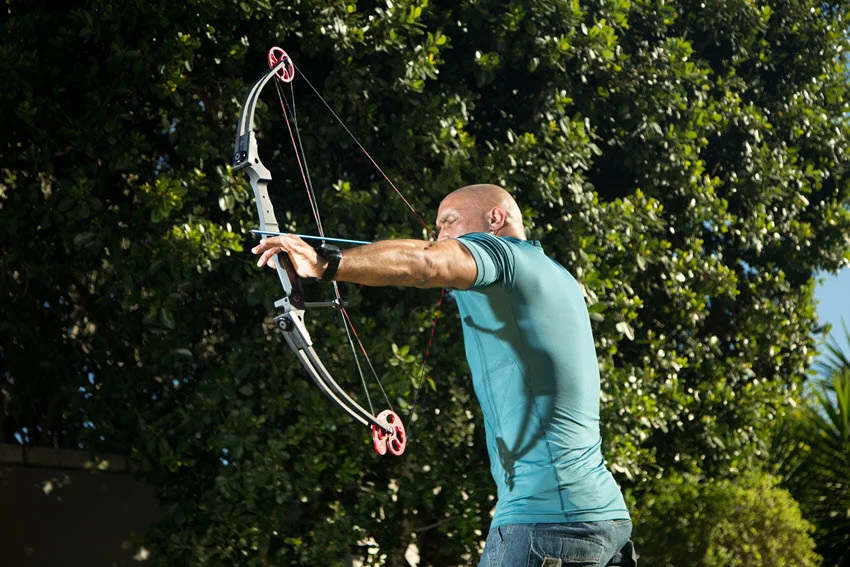
Solid aluminum arrows are used for their exceptional strength, durability, and lightness. Made from high-quality aluminum, they can withstand significant impact without major bending or breaking, making them a good choice for rocky areas or debris-filled waters. They are significantly heavier than fiberglass or carbon arrows but offer improved penetration and stability, ensuring accurate shots.
They are also equipped with barbed tips for a secure grip, and the larger ones have solid notches and safety slides to prevent rope entanglement. They can be used in fresh and saltwater, providing reliable performance and easy maintenance in both habitats.
Reels are essential equipment for almost every fishing technique, including bowfishing. They are designed to handle the needs of fast and efficient shooting and retrieval of arrows. Several types of reels exist, and their advantages and disadvantages are discussed below.
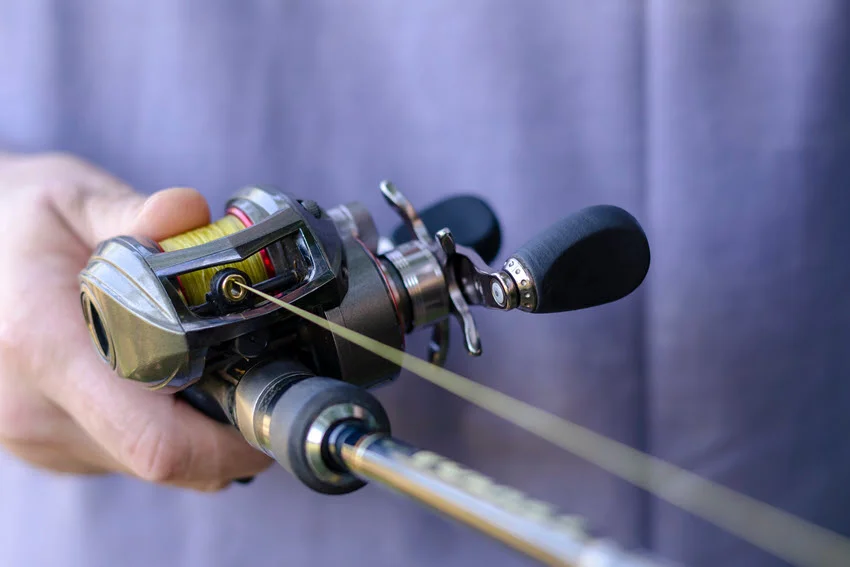
Handwinding reels are the simplest and most basic type of reel. It consists of a spool attached to the bow, where the rope is wound by hand. They are very affordable, but their quality remains high.
Their simplicity means there are fewer parts to break. However, what is often cited as their main disadvantage is that they can be slower and more cumbersome to use, especially when dealing with large or active fish. The hand-winding process can be time-consuming, increasing the risk of entanglement.
Despite these challenges, hand wrap rolls' affordability and simple design make them a valuable option or #1 backup.
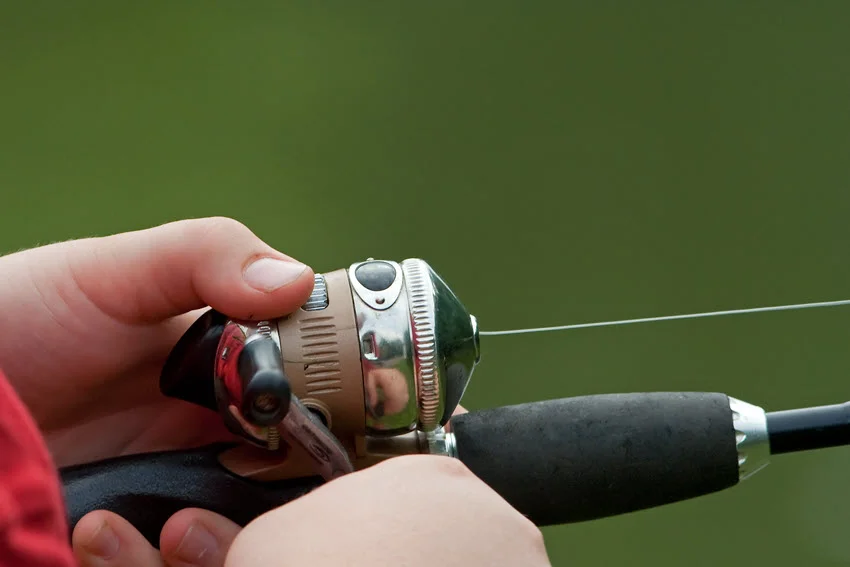
Spincast reels are similar to traditional reels. They have a simple design, are easy to use, versatile, and durable. Their closed-face design protects the rope, reducing the likelihood of tangling and damage. Another advantage of spinning reels is a simple push-button mechanism that makes them easy to handle, enabling quick and efficient throwing and retrieval.
Spincast reels are very versatile, and you have tons of options. They are suitable for lakes, rivers, or coastal waters and can be adapted to weather conditions. The downside is that they require extensive cleaning and maintenance to prevent tangling and ensure long-lasting performance.
Retriever reels are highly regarded for their quality, which successfully balances efficient mechanism, speed, line management, and durability. These reels are operated using a line take-out handle, similar to a winch, with the line stored in a bottle or container attached to the reel. They feature a textured mechanism that ensures a quick and smooth retrieve, which is crucial when fishing for fast-moving fish.
Retriever reels are known for excellent line management. The line stored in the bottle virtually eliminates the tangling problem, improving the fishing process's efficiency and reducing the risk of accidents or lost fish due to tangled lines. Retriever reels are also very durable and can withstand significant, firm fish's heavy use and stress.
When deciding where to bowfishing, you are usually presented with two basic options: from a boat or shore. But, if you are up for even more adventure, you can also fish from bridges, piers, and boats. Each method has advantages, so let's study them in more detail.
The primary advantage of bowfishing from a boat is increased mobility and coverage of larger bodies of water inaccessible from shore, which automatically increases your chances of a successful catch.
The boats provide great versatility, fishing in deep lakes, coastal areas, and rivers. If you opt for more modern ships, they often come with specialized equipment, such as powerful lights for night fishing and elevated platforms for better visibility.
You can target various species from a boat, including those living in more profound or distant waters. The ship is efficient and has the convenience of carrying more equipment and supplies, ensuring you are well-prepared for longer fishing trips. Of course, you will have to pay maintenance or rental costs, and for fishing to be safe and successful, it is crucial to know how to manage the boat.
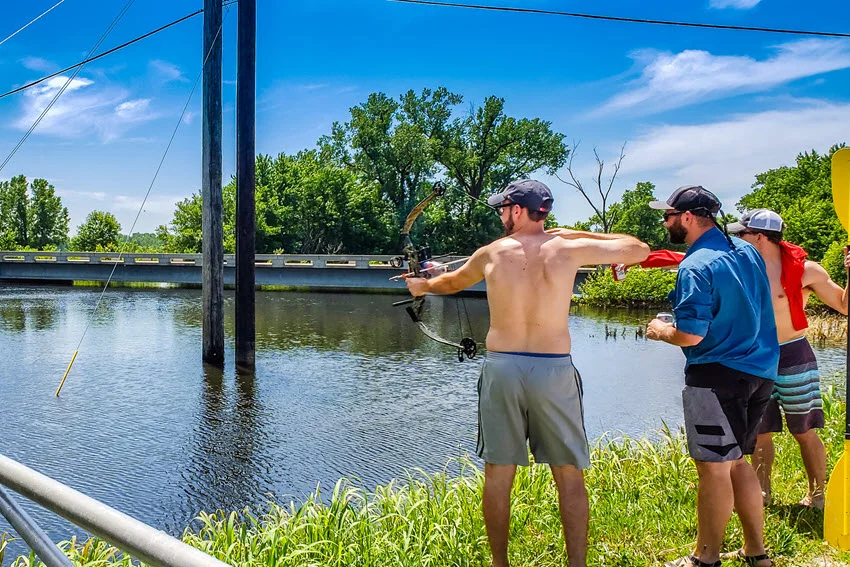
First and foremost, bowfishing from the shore offers ease of access and the use of less equipment, making it an excellent option for beginners or those without a boat.
Convenience is another advantage; if you have an irresistible need to put an arrow in the water immediately, you can quickly start fishing without extensive preparation, which adds to the spontaneity and relaxation. If you are a beginner, practicing bowfishing from shore is best.
However, there are some considerations to keep in mind. Shore fishing limits your range to areas you can reach on foot or by car, so you must find a suitable spot with clear, shallow water and minimal obstructions.
Also, the variety of fish you can target from shore can be more limited than fishing from a boat. However, despite these limitations, the great advantage is that it is accessible to everyone. You just need a bow and arrow to start bowfishing.
The attraction of bowfishing from bridges and jetties is primarily the elevated view, which makes it easier to spot fish. Another advantage is that bridges and poles are often easily accessible to everyone and do not require additional equipment. Also, many are usually equipped with lights, making them ideal for nighttime bowfishing.
However, there are significant security issues to keep in mind. The key is to make sure that bowfishing is allowed from a specific bridge or jetty, and it happens that popular fishing spots can be crowded, which can limit your space and movement.
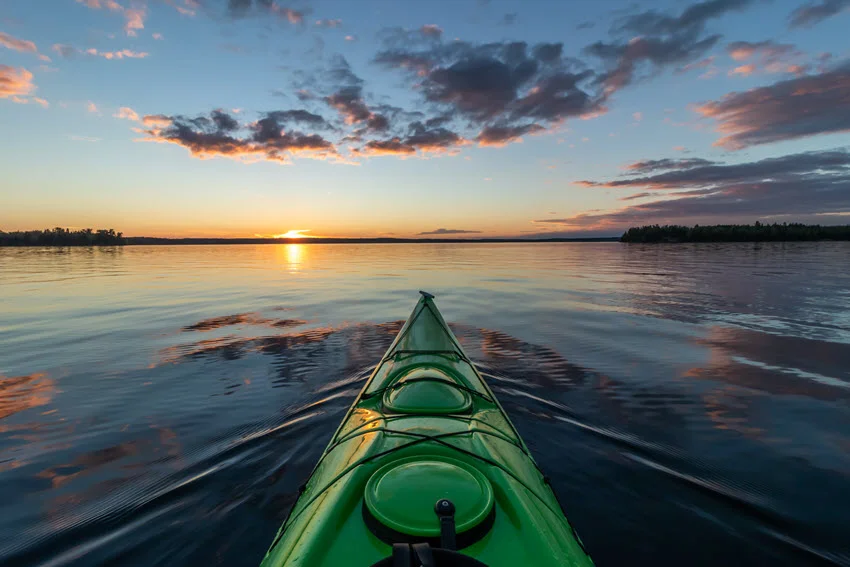
Besides sounding very adventurous, bowfishing from kayaks and canoes has several benefits. These are primarily small, portable vessels easily transported to different locations, providing flexibility and contributing to adventure. Good stealth and maneuverability allow you to approach fish quietly and navigate narrow waterways and shallow areas.
Additionally, kayaks and canoes are generally less expensive than powerboats, making them an inexpensive boating option. However, these vessels are only for some. It is vital to maintain stability while shooting from a kayak or canoe. This can be incredibly challenging for beginners, requiring good balance and practice. In addition, equipment space is limited, so efficient packing and maximum utilization of space without overcrowding is essential.
If you've never shot anything with a bow and arrow, especially fish, it might seem like an easy endeavor, almost like child's play, but it's not. The stealth approach and aiming accuracy are the key ingredients that create specific bowfishing strategies.
Mastering the stealth approach to bowfishing means reducing or eliminating all distractions. This means moving slowly and deliberately to avoid creating vibrations, noises, and sounds that might scare the fish. You can ensure minimal noise by placing your feet carefully and avoiding unnecessary splashing. Use natural cover such as vegetation, rocks, or structures to conceal your presence and stay low to the ground.
In addition to controlling your movements, control your breathing slowly and take deep breaths to keep yourself calm while aiming. When you spot a fish, curb the rush of adrenaline by willingly focusing on slow, deliberate movements and positioning yourself for the shot with slow-motion movements without leaving the ambush.
Position yourself to aim below the fish to counteract potential optical illusions, setting the scope lower for deeper fish. After that, your focus must be on the target's center of mass and not on specific parts of the body, as this will increase the probability of a successful hit. After releasing the arrow, continue tracking to ensure your shot stays on target, especially for moving fish or longer distances.
If you're new to bowfishing, through consistent repetition of these actions, you'll develop muscle memory over time, allowing you to aim and shoot smoothly without relying on the scope.
Ultimately, it all comes down to aiming accuracy – how well you can control your movements and generate them into a precise, sharp target. Bowhunting is reduced to the art of self-control and breathing techniques.
Bowfishing stands out as an incredibly captivating method of catching fish. The appeal lies in the ease of learning and the availability of suitable locations across the country, and it is more than evident that mastering the art of this unique sport is becoming increasingly profitable.
It's straightforward, especially if you want to learn and are motivated! With the effort and all the information we have presented in this guide, successful fishing can succeed.
If you're already making a list of the equipment you need for bowfishing, creating plans, and choosing destinations, don't hesitate to share it all with us in the comments! We and fellow anglers are here to help you, share a tip or two, and just talk about bowfishing together! Remember, we always look forward to seeing you!

The expert copywriters at Anglers Booking have meticulously crafted this article. Our dedicated team of writers provides valuable insights and information to enhance your angling experience.
Embark on unforgettable fishing adventures with us at Anglers Booking.
book your charterOctober 17, 2025
October 15, 2025
October 10, 2025
October 11, 2025
October 4, 2025
September 29, 2025
September 25, 2025
September 21, 2025

You're now part of our exclusive community. Get ready for premium content and updates straight to your inbox.
close
Subscribe to our newsletter and receive a selection of cool articles every week.
Please enter a valid email address.

Be the first to know when we're back in action.
Please enter a valid email address.
Leave a Comment
Your email address will not be published. Required fields are marked *
Thank you for your comment! It has been submitted for review and will appear on the site shortly.